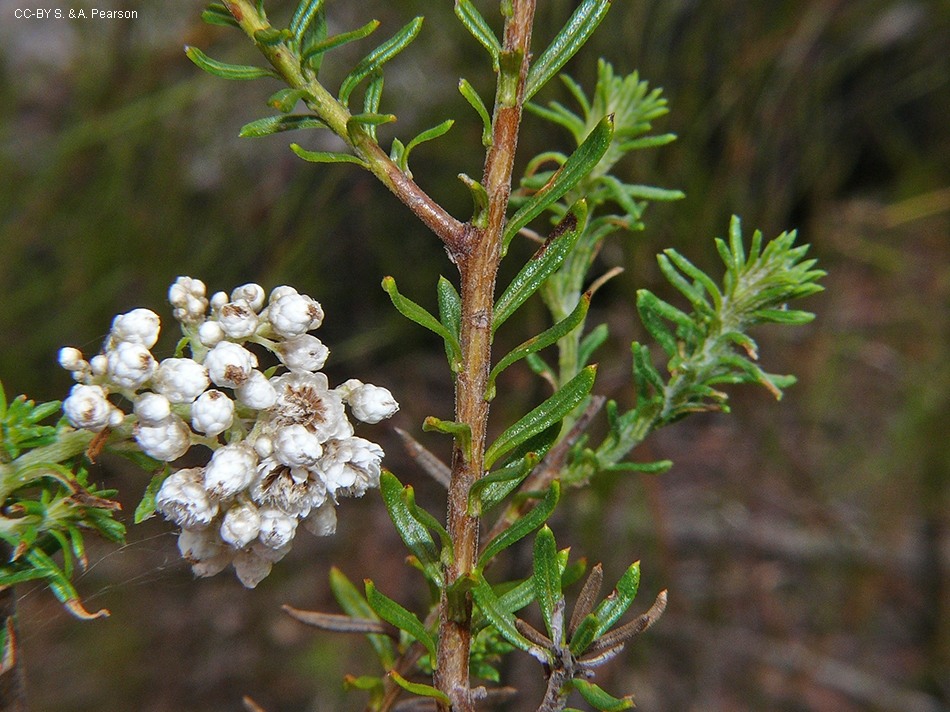Australian Tropical Rainforest Plants - Online edition
Ozothamnus diosmifolius (Vent.) DC.Candolle




A.P. de in Candolle, A.P. de (ed.) (1838), Compositae. Prodromus Systematis Naturalis Regni Vegetabilis 6: 166
White Dogwood
Leaves alternate, simple. Stipules absent. Petiole indistinct to absent. Leaf blade very narrowly elliptic to narrowly oblanceolate or linear, 0.6-2 cm long, 1-3 mm wide; base attenuate to cordate, margin entire, strongly revolute, apex acute, obtuse, reflexed. Leaves scabrous and green above, lower surface whitish to pale fawn and densely tomentose. Strongly aromatic with unpleasant smell when crushed.
Inflorescence terminal, flowers in small heads of 20-22 flowers arranged in dense corymbs. Heads globose, 2-3 mm diam., subtended by several rows of whitish or pinkish papery involucral bracts. Flowers bisexual, actinomorphic, 5-merous. Calyx reduced to a whorl of barbed bristles (pappus). Corolla tubular, 1.7-2.1 mm long, white, sometimes tinged with pink; stamens 5, anthers fused to form a tube but the filaments free from one another, yellow, anthers ± exserted from corolla tube; ovary inferior, 1-locular, style 2-branched.
Fruits produced within a head of overlapping, white or pale brown bracts. Fruit a dry cypsela (a dry indehiscent 1-seeded fruit), cylindrical, 1-1.5 mm long, hairy. Cypsela with persistent pappus, 2-3 mm long, pappus bristles ± clavate at the apex. Cypsela retained in heads surrounded by involucre.
Features not available.
Widely distributed in eastern NSW and SE Queensland, extending inland to as far west as Dubbo and Carnarvon Gorge. Grows on margins of rainforest and in heath in a variety of soils.
This profile information and associated coding has been adapted from Harden et al. (2014).





